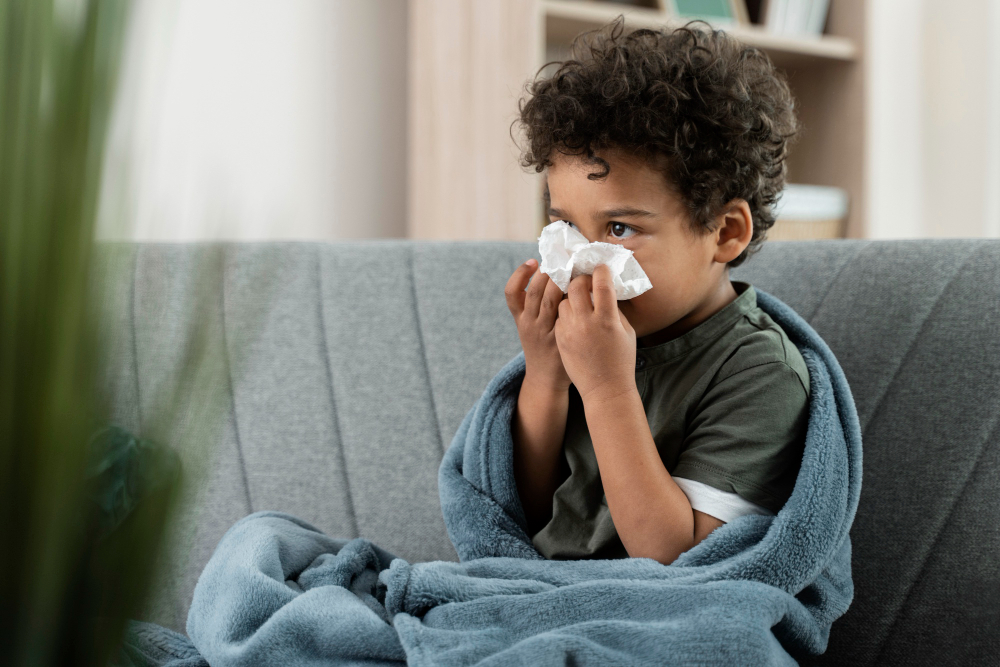What Is the Flu in Children?
The flu in children is a common illness caused by the influenza virus. This virus spreads easily, especially in schools and daycare centers. Children can catch the flu by touching surfaces or breathing in droplets from a sick person. Because kids have weaker immune systems, they may get sick more often. According to the CDC, children under five are at higher risk for flu complications. Early care helps prevent serious problems.
Common Symptoms of Flu in Children
Flu symptoms in kids can appear quickly. Sometimes, they seem like a cold, but the flu is usually more severe. Watch for these signs:
However, not all children will have every symptom. If your child has trouble breathing, chest pain, or a high fever that won’t go down, seek medical help right away.
Causes and Risk Factors
The flu virus spreads through droplets when someone coughs or sneezes. Kids can also get it by touching toys or surfaces with the virus, then touching their mouth or nose. Some children are at higher risk, including:
Because the flu spreads easily, crowded places like schools can increase the risk. Good hygiene helps lower the chance of getting sick.
How Flu in Children Is Diagnosed
Doctors often diagnose the flu in children based on symptoms and a physical exam. Sometimes, they use a quick test by swabbing the nose or throat. This test can show if your child has the flu virus. However, not all children need testing. If your child is very sick or has risk factors, the doctor may suggest more tests. Early diagnosis helps start treatment sooner.
Treatment Options for Flu in Children
Most children with the flu get better at home. However, some need extra care. Here are common ways to treat flu in children:
Sometimes, doctors prescribe antiviral medicine if the flu is caught early. These medicines can help shorten the illness. But, they work best within two days of symptoms starting. If your child has trouble breathing, chest pain, or cannot keep fluids down, see a doctor right away. According to the CDC, children with chronic health problems may need special care.
Prevention Tips for Flu in Children
Preventing flu in children is important for their health. Here are some tips to help keep your child safe:
Because the flu vaccine is safe and effective, it is the best way to prevent flu in children. The CDC and WHO recommend yearly vaccination for everyone over six months old.
Lifestyle Guidance for Recovery
Helping your child recover from the flu takes time and care. Here are some helpful steps:
After the flu, your child may feel tired for a few days. However, most children recover fully with good care at home.
When to See a Doctor
Sometimes, flu in children can become serious. Seek medical help if your child:
Early treatment can prevent complications. Always trust your instincts as a parent or caregiver.
Conclusion
In summary, flu in children can be serious, but most recover well with care. Prevention, early diagnosis, and proper treatment are key. Consult a pediatrician for personalized advice if your child shows flu symptoms.
